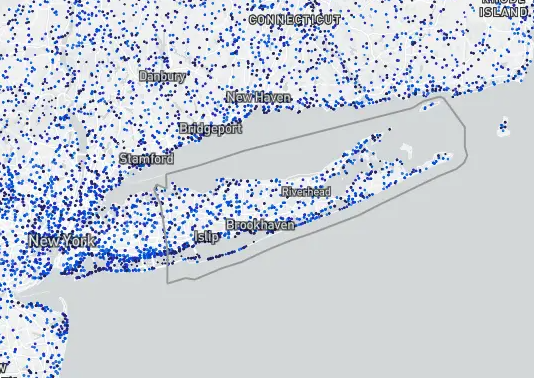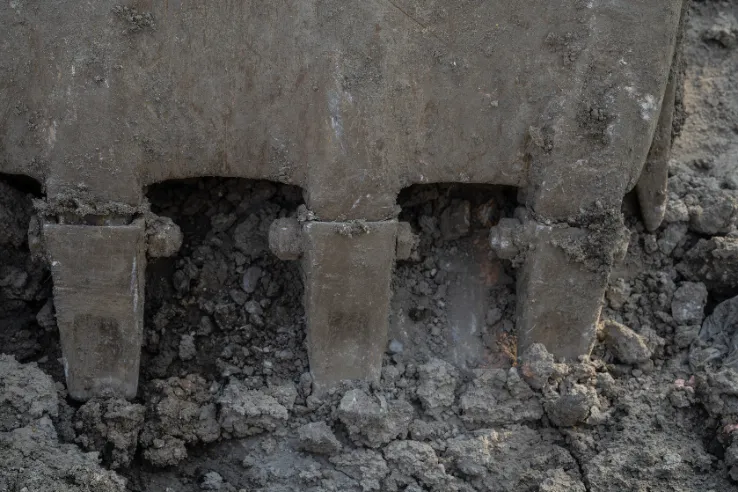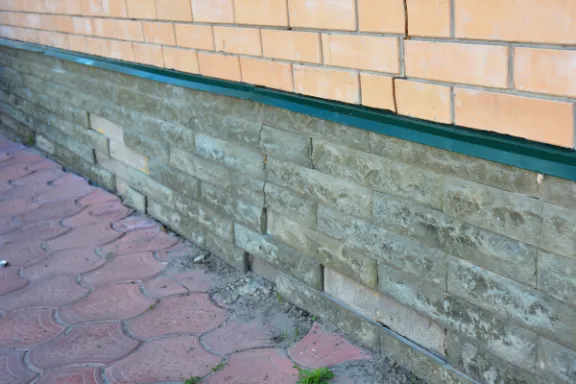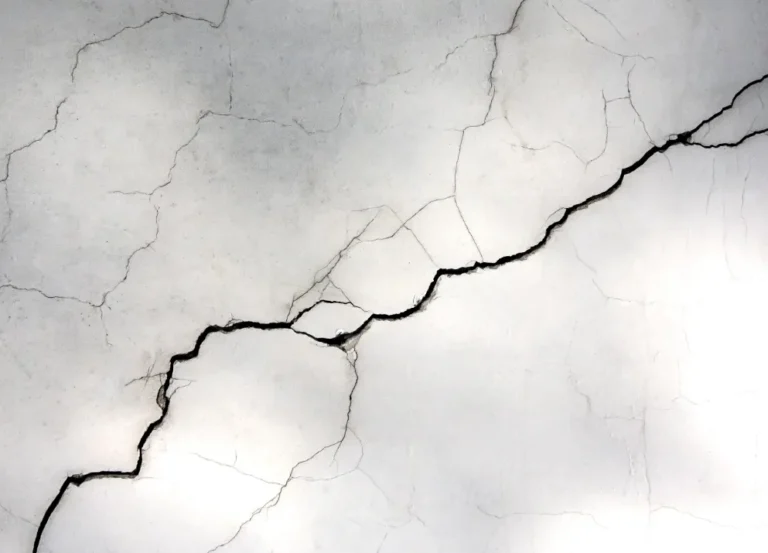Top 5 Signs of Foundation Damage to Waterfront Properties in Long Island
Living in a waterfront home offers beautiful views and serenity, but it also brings unique challenges that can impact your foundation. Foundation damage in coastal areas is a serious concern—water seepage, erosion, and settlement can quickly escalate into costly repairs if left unchecked. Whether it’s a small crack or a shifting foundation, ignoring these issues can jeopardize both the safety of your property and its value.
At Piers and Piles, we bring over 20 years of experience and offer proven solutions backed by a 30-year warranty to keep your foundation secure. Contact us today for a free foundation assessment and discover how our expertise can protect your home or commercial property in Long Island, Brooklyn, or Queens.
Get A Free Foundation Assessment Backed By Our 30-Year Warranty!
Foundation Issues Unique to Waterfront Homes in Long Island and Coastal New York
Living near the water in Long Island, Brooklyn, and Queens comes with unique foundation risks. High water tables, frequent flooding, saltwater intrusion, and erosion can weaken your foundation over time. These environmental factors put extra strain on your property, increasing the risk of cracks, settlement, and moisture intrusion.
Spotting the early signs of foundation damage is essential to protecting your investment and maintaining property value. In the following sections, we’ll cover the top 5 signs of foundation issues that every coastal property owner should watch for.
High-Risk Areas for Water Damage and Foundation Issues in Long Island, Brooklyn, and Queens
Many cities across Long Island, Brooklyn, and Queens face unique foundation challenges due to their proximity to water. The combination of high water tables, frequent flooding, and coastal erosion puts increased pressure on the foundations of homes and buildings. If you live in one of these cities, it’s crucial to pay attention to early signs of foundation damage. Ignoring these warning signs can lead to serious structural issues, increased repair costs, and potential safety risks. Regular foundation inspections and proactive maintenance can help protect your property from these environmental threats.

Signs of Foundation Damage in Waterfront Properties
From high water tables to erosion and flooding, environmental forces that are inherent to living in waterfront properties can slowly undermine your foundation, leading to costly repairs if not caught early. Recognizing the early signs of foundation damage is critical for protecting your property and ensuring its long-term stability.
Below, we’ve outlined the top 5 signs of foundation issues that every waterfront homeowner should be aware of, helping you safeguard your investment before the damage becomes more serious.
Cracks in Foundation or Exterior Walls
Cracks, whether vertical or horizontal, are clear signs of foundation movement. These cracks often appear along exterior walls, particularly near doors and windows or along the foundation slab. Any visible cracks, no matter how small, can indicate that your foundation is shifting and may require attention.
Why This Happens:
Coastal homes are frequently exposed to shifting soil, erosion, and settlement caused by flooding and coastal winds. These environmental factors cause the foundation to move, leading to cracks in the structure. Over time, if these cracks widen, they can signal more serious structural issues.
What to Do:
- Monitor cracks for growth or expansion.
- Contact a professional to inspect and assess the severity of the damage.
- Stabilize your foundation with solutions like helical piers to prevent further movement.
Saltwater Corrosion on Foundations
If you live near the ocean, you may notice corrosion or spalling concrete on your foundation, which are early signs of saltwater intrusion. The metal reinforcements in your concrete foundation are particularly vulnerable to rust, which weakens the structure over time.
Why This Happens:
Saltwater from the ocean can penetrate concrete, causing the metal reinforcements inside to corrode. As these reinforcements rust, they expand, leading to cracks and structural weakening. Without proper protection, saltwater intrusion can cause long-term damage to your foundation, especially in coastal properties.
What to Do:
- Apply anti-corrosive coatings to protect your foundation from saltwater intrusion.
- Regularly inspect your foundation for signs of spalling or concrete deterioration.
- Consider reinforcing or repairing any areas of concern before the damage worsens.
Foundation Settlement and Uneven Floors
If you notice uneven floors, doors, or windows that are difficult to open or close, this is a common sign of foundation settlement. When the soil beneath your home shifts, it causes the foundation to settle unevenly, creating structural imbalances that can result in visible issues inside your home.
Why This Happens:
In waterfront areas, excess water saturation from the surrounding environment weakens the soil under your foundation. This weakened soil can cause your home to sink or shift, leading to cracks and uneven flooring throughout the structure.
What to Do:
- Install helical piers to stabilize your foundation and prevent further settlement.
- Monitor uneven floors and any cracks for signs of worsening damage.
- Schedule regular inspections to ensure your foundation remains stable over time.
Erosion Around Your Foundation
Erosion is a frequent issue for coastal homes, where water runoff and waves gradually wear away the soil that supports your foundation. As the soil erodes, it creates gaps and voids, leading to structural instability and increasing the risk of foundation problems such as settling and cracking.
Why This Happens:
Storm surges, heavy rains, and coastal winds constantly displace the soil around your foundation. Over time, this results in soil erosion, which weakens the support for your home’s foundation. Without proper intervention, erosion can lead to significant foundation damage, including cracks and settling.
What to Do:
- Install retaining walls and drainage systems to prevent further soil erosion.
- Fill any gaps or voids around your foundation using proper soil stabilization techniques to reinforce its strength.
- Conduct regular inspections to monitor erosion-prone areas and ensure long-term protection.
Living in a waterfront property is a dream for many, but the unique environmental challenges can put your foundation at serious risk. From water seepage to saltwater corrosion and erosion, coastal homes are particularly vulnerable to foundation damage that can lead to costly repairs and compromise the safety of your property. Spotting the signs of damage early and addressing them promptly is key to maintaining your home’s value and structural integrity.
Advanced Foundation Solutions. Industry Leading Warranties
Restore your home’s stability with our expert foundation leveling options, including helical piers, push piers, micropiles, and advanced ground improvement techniques. Our proactive, experienced technicians deliver honest pricing and unmatched quality, backed by 30-year warranties. Protect your property’s future—trust Piers and Piles for reliable, long-term foundation solutions. Contact us today!
Why Coastal Properties Need Extra Attention: The Effects of Coastal Weather on Foundations
Coastal properties are exposed to a unique set of challenges due to constant exposure to storm surges, flooding, and saltwater intrusion. These weather events can accelerate foundation erosion, cause shifting soil, and create long-term structural vulnerabilities. Homes near the water are at higher risk for cracks, settlement, and corrosion due to the increased moisture and harsh conditions.
Regular maintenance and professional inspections are essential for preventing serious foundation damage. By identifying and addressing issues as quick as possible, homeowners can protect their property and avoid costly repairs in the future.
How to Prevent Foundation Problems
Preventing foundation damage in coastal areas requires proactive measures to counteract the environmental risks that come with living near the water.
Key preventative solutions include:
- Waterproofing solutions to prevent seepage and keep basements and foundations dry.
- Helical piers to stabilize shifting or settling foundations, providing long-term stability.
- Saltwater-resistant coatings to prevent corrosion and extend the lifespan of your foundation.
These strategies will ensure that your foundation is well-protected from the effects of water damage, erosion, and saltwater exposure.
Why Choose Piers and Piles
At Piers and Piles, we specialize in protecting waterfront properties throughout Long Island, Brooklyn, and Queens. With over 20 years of experience in foundation support and ground improvement techniques, our team has the expertise to assess, repair, and safeguard your foundation from the unique challenges of coastal living. Our solutions are backed by a 30-year warranty, ensuring your home or commercial property remains secure for the long term.
Our commitment to high-quality work and proven solutions has earned us the trust of homeowners across the region. Whether you’re facing flooding, saltwater intrusion, or foundation settlement, Piers and Piles is your trusted partner in foundation repair.
Don’t Wait for Foundation Problems to Escalate: Get Your Free Foundation Inspection in Long Island, Queens, and Brooklyn Now!
The signs of foundation damage in waterfront properties can start small, but they can quickly develop into major issues if left unchecked. From water seepage and cracks to saltwater corrosion and erosion, acting early is the key to protecting your home and preserving its value.
By addressing foundation issues before they escalate, you can save yourself from costly repairs and maintain the integrity of your property. If you’ve noticed any signs of foundation trouble, don’t hesitate to reach out for professional help.
Get a Free Foundation Inspection for Your Waterfront Home Today – Contact Piers and Piles to Protect Your Investment!


